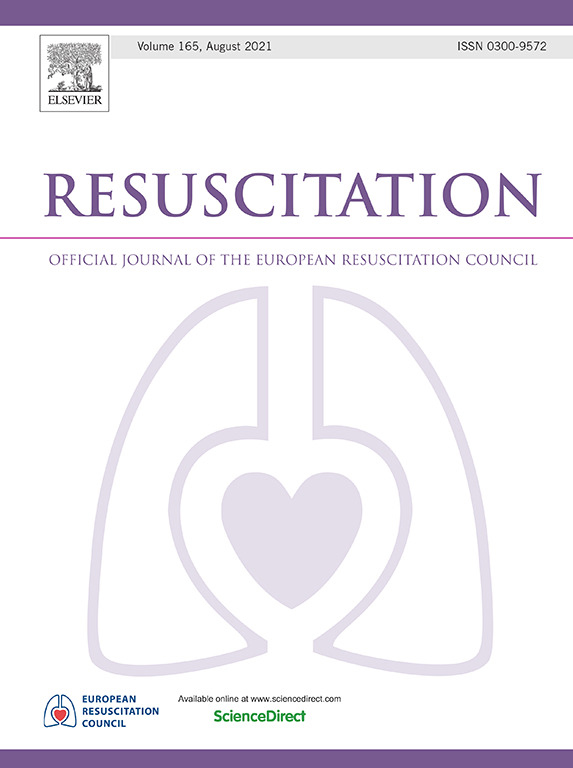Utility of magnetic resonance spectroscopy in predicting favorable outcome in adult comatose patients following cardiac arrest
IF 4.6
1区 医学
Q1 CRITICAL CARE MEDICINE
引用次数: 0
Abstract
Aim
To correlate brain metabolites with clinical outcomes using magnetic resonance spectroscopy (MRS) in cardiac arrest (CA) patients and assess their prognostic performance compared to quantitative apparent diffusion coefficient (ADC) maps.
Methods
Comatose CA patients who underwent MRI and concurrent MRS were included. Primary outcome: coma recovery at hospital discharge; secondary outcome: good neurological function at 6 months (Cerebral Performance Index 1–2, vs. 3–5). Six metabolites were measured in the posterior cingulate gyrus (PCG), parietal white matter, and brainstem. Mean ADC values, and percentage of voxels with ADC <450 and <650 × 10−6 × mm2/s were computed for whole brain and specific regions. Prognostic performance was compared using Receiver Operating Characteristic (ROC) curves.
Results
Of 94 patients, 25 (27 %) achieved coma recovery, and 22 (23 %) had a good outcome at 6 months. N-acetylaspartate/Creatine (NAA/Cr) in the PCG was most discriminative for coma recovery (median 1.29, IQR 0.21 vs. 0.86, 0.32; p-value <0.0001). NAA/Cr had the highest area under the curve for coma recovery (0.9, 95 % CI 0.84–0.96) and good outcome at 6 months (AUROC 0.88, 95 % CI 0.82–0.95), significantly outperforming all quantitative ADC measurements, except mean ADC of the PCG for the secondary outcome (adj. p-value = 0.064). Multivariable models incorporating NAA/Cr or ADC, alongside clinical and EEG variables, demonstrated improved performance compared to models with clinical and EEG variables alone, though the difference was not statistically significant. Adding MRS to established early predictors of favorable outcome increased the specificity from 67 % to 93 % at 100 % sensitivity.
Conclusion
MRS-derived NAA/Cr in the PCG is a valuable predictor of good outcome in comatose CA patients, outperforming quantitative ADC measurements for coma recovery. Further studies are needed to optimize MRS acquisition for multimodal neuroprognostication.
磁共振波谱在预测心脏骤停后成人昏迷患者预后中的应用
使用磁共振波谱(MRS)将心脏骤停(CA)患者的脑代谢物与临床结果联系起来,并与定量表观扩散系数(ADC)图比较,评估其预后表现。
本文章由计算机程序翻译,如有差异,请以英文原文为准。
求助全文
约1分钟内获得全文
求助全文
来源期刊

Resuscitation
医学-急救医学
CiteScore
12.00
自引率
18.50%
发文量
556
审稿时长
21 days
期刊介绍:
Resuscitation is a monthly international and interdisciplinary medical journal. The papers published deal with the aetiology, pathophysiology and prevention of cardiac arrest, resuscitation training, clinical resuscitation, and experimental resuscitation research, although papers relating to animal studies will be published only if they are of exceptional interest and related directly to clinical cardiopulmonary resuscitation. Papers relating to trauma are published occasionally but the majority of these concern traumatic cardiac arrest.
 求助内容:
求助内容: 应助结果提醒方式:
应助结果提醒方式:


